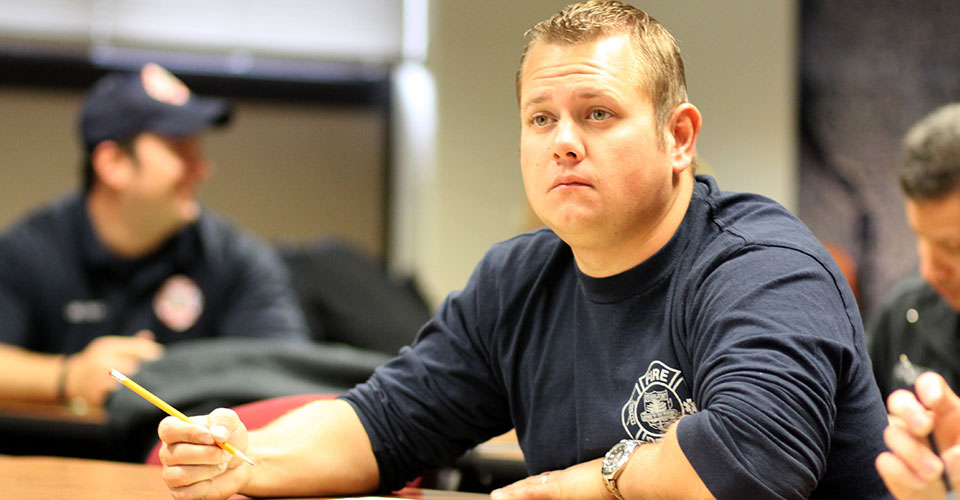

In an emergency, communication is key. But what happens when someone is unable to communicate to first responders or medical personnel? First-year graduate student Jim McMahon and Professor Julia King, Ph.D. from the UW-Stevens Point School of Communicative Disorders visited the Stevens Point Fire Department this week to present about aphasia, an impairment of language ability, and how to assist victims during an emergency. [Photo Gallery]
Over one million Americans struggle with aphasia (1 in every 250 people). Aphasia is usually caused by stroke, head injury, brain tumor or neurological conditions. It impairs a person’s ability to speak, process language, and sometime understand others. While aphasia is most common among older people, it can occur in people of all ages, races, nationalities and gender.
McMahon and King presented the facts about aphasia and provided the fire fighters communication tips for when they encounter a person with aphasia, including minimize background noise, keep your voice at a normal level, and ask “yes” and “no” questions. The National Aphasia Association has introduced aphasia ID cards and window decals to help those with aphasia identify themselves.
For more information about aphasia, visit www.aphasia.org and watch the videos below:
Wernicke’s Aphasia
Broca’s Aphasia
